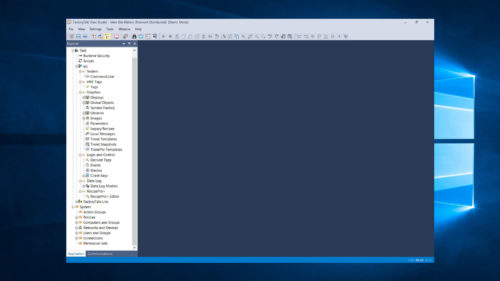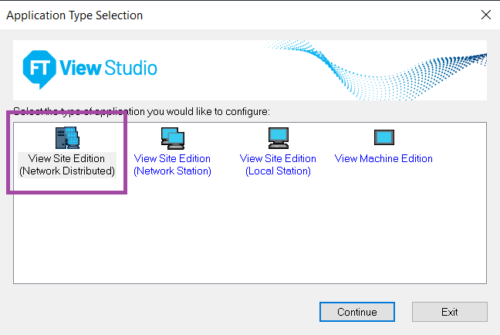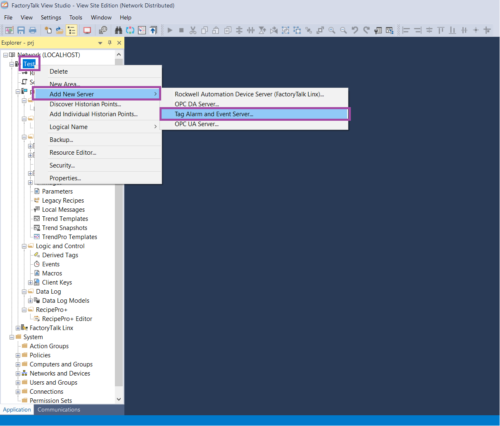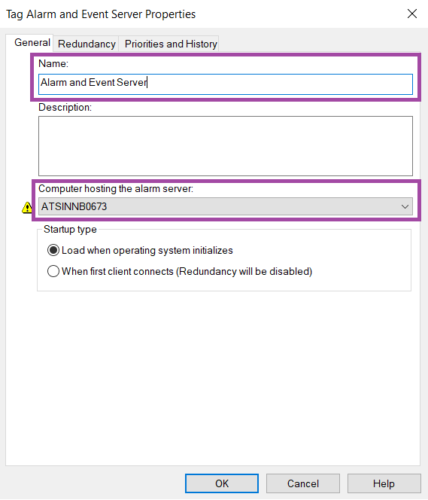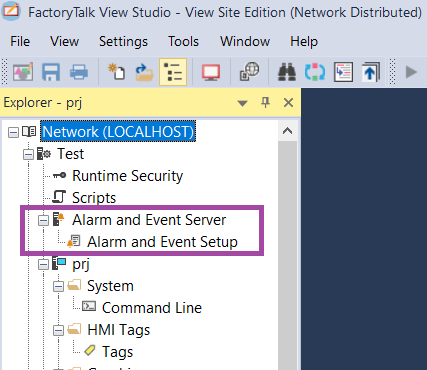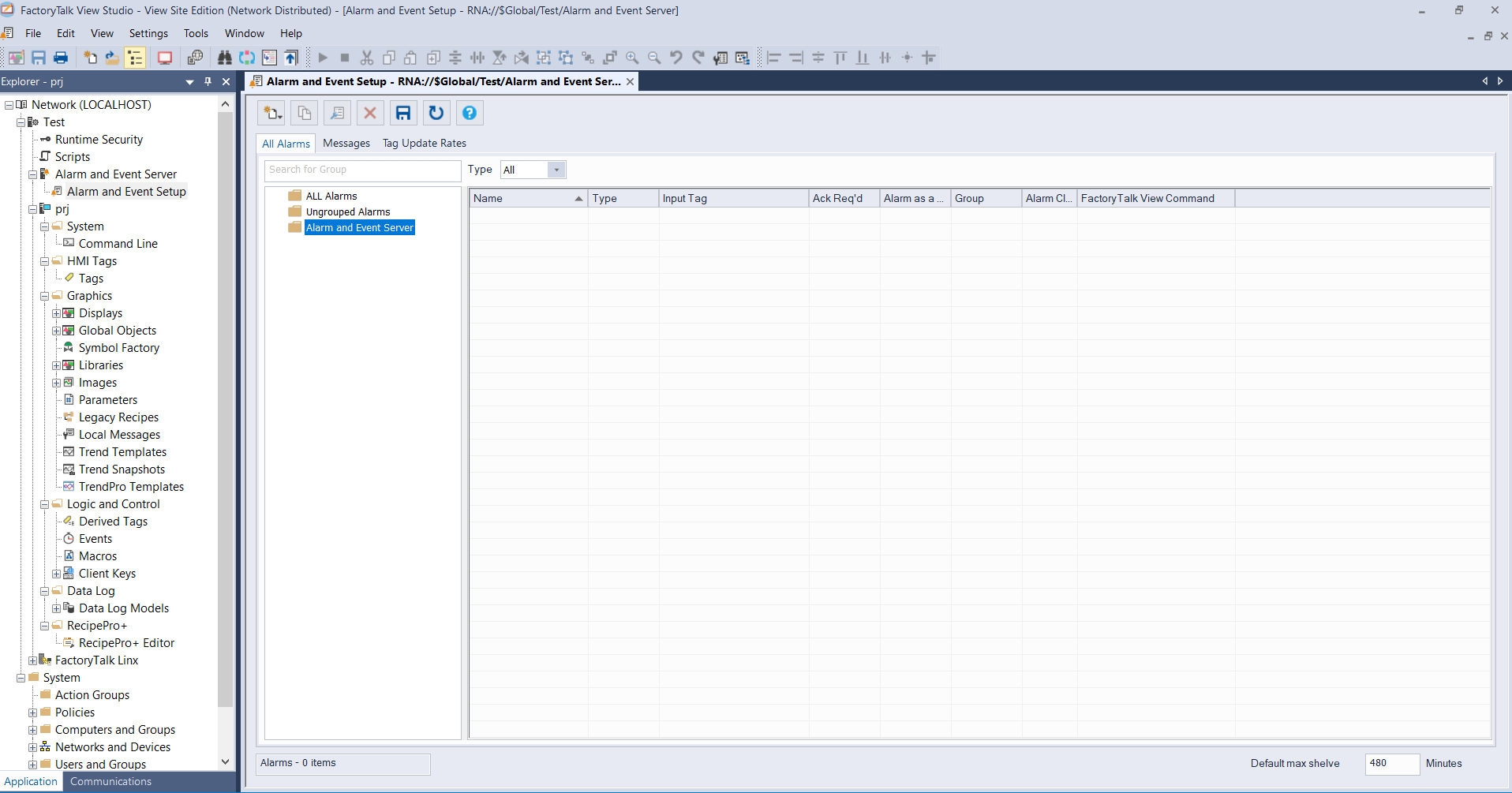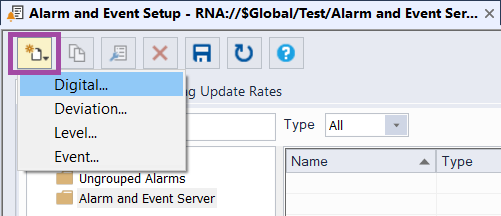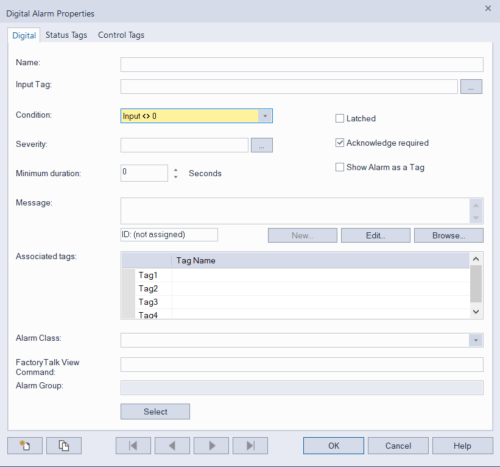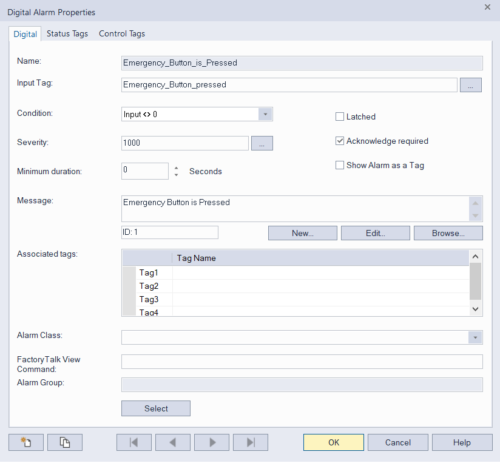
In this new article, we will learn to create an Alarm and Event server with an example.
An alarm is a critical part of any process, system or machinery, etc. An alarm can prevent you from a fatal accident and provide you with information about what is happening and why to troubleshoot.
With Factory Talk View, while development you have to create a server to add Alarms and events so, we can see those alarms when it is generated.
Let’s start by adding a server to our testing project. First, open the Factory Talk View application.
Select, the “Network Distributed” Application type.
Create a new project or your existing one which doesn’t have an Alarm and Event server created.
After opening project, right-click on “Test”, choose “add new server” and select “Tag alarm and event server”.
The following window will appear. Here, gives a suitable name to the server. Choose the name of the computer which you are working on.
Select startup types as “Load when Operating System Initializes”.
Press “ok” to add a server to your project.
Here, in the below window, you can see that the Alarm and event server is now added under our main HMI server.
Now, Double clicks on “Alarm and Event Setup” to open the internal environment.
This is where we can add alarms and events to our factory Talk System.
Now, we will explore options available to create an alarm. Under “New”, You can see four options to choose from.
-
Digital – we can create an alarm with two states, either “ON” or “OFF”. Mostly we create an alarm in this category.
-
Deviation – Here, we can set a target value and provide a deviation value with the condition. If the value goes beyond the set condition, then an alarm will generate.
-
Level – This is specially used for a value that is varying like an analog signal. In level, we can set Low, Lo-Lo, High, and High-High values to trigger an alarm.
-
Event – As the name implies, an alarm generates based on a particular instance or event triggered.
Let’s create a single alarm to add to this section. For that, I need to create internal memory tags to link with the name of the alarm.
As I do not have a setup PLC code to generate an alarm, I cannot link it directly.
Clicking on Digital will open up the below popup. Here, we have multiple options to fill.
First, provide a suitable name for the alarm. Link it with “Input Tag”.
Give “Severity”. You can type in from “1-1000”.
You can define severity as mentioned below.
-
1-249 (LoLo)
-
250-499 (Lo)
-
500-749 (Hi)
-
750-1000 (HiHi, critical)
In “message” you can write a description for an alarm.
In “Associated Tags”, we can add an alarm specifically related to the Batch. Like, Batch Name, Batch Number, Lot Number, and Batch size.
This way we can easily filter alarms based on the batch.
Now, let’s add all the mentioned details to create a single alarm.
Hit “ok” to add an alarm to the list.
You can see that our created alarm is added to the alarm and event server.
This way we can create thousands of alarms in the alarm and event server.
In the next article, we will learn how to import and export alarms to the “alarm and event server”.
We will add more alarms by exporting the list of alarms created here in Factory Talk View SE.
Written by Suhel Patel
Automation Engineer and Freelance Writer
Have a question? Join our community of pros to take part in the discussion! You'll also find all of our automation courses at TheAutomationSchool.com.
Sponsor and Advertise: Get your product or service in front of our 75K followers while also supporting independent automation journalism by sponsoring or advertising with us! Learn more in our Media Guide here, or contact us using this form.
- View Studio Site Edition – Client Keys - October 21, 2022
- View Studio Site Edition – Parameter Passing - September 20, 2022
- View Studio Site Edition – Alarm and Events: Export, Edit, and Import - August 9, 2022

Discover more from The Automation Blog
Subscribe to get the latest posts sent to your email.


